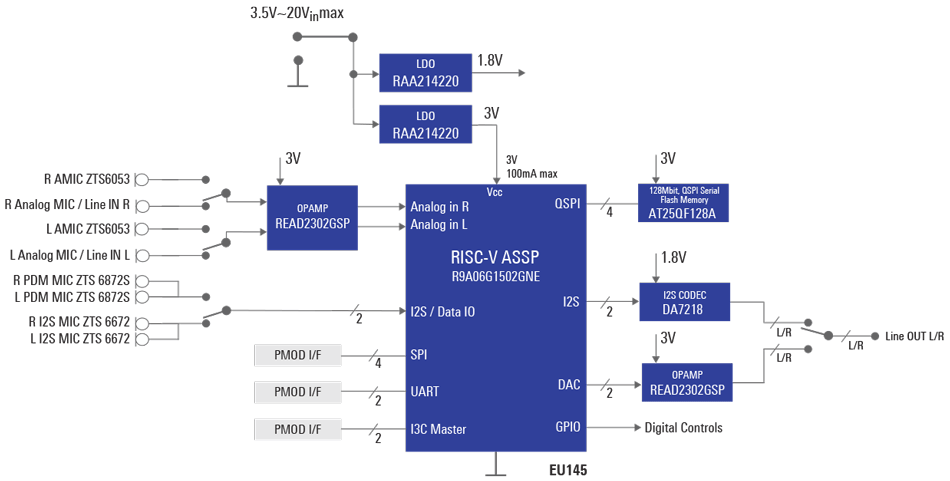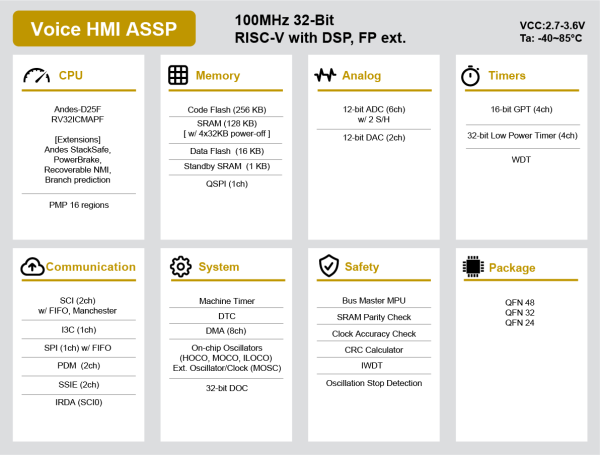Human-machine interfaces based on voice commands provide a convenient way to interact with systems like appliances, displays, home accessories, and other gadgets and can replace or augment traditional means of control like buttons, knobs, or sliders. The recent worldwide pandemic has obviously increased the attention for such touch-free interaction methods but even without such urgency, for modern systems it is very desirable to implement such advanced controls to improve the end user experience.
Implementing such technologies, however, requires specialized expertise in many complementary fields of embedded systems development. For such applications, the environmental audio content is acquired in real time and the stream of samples gets processed to extract and filter relevant information to recognize specific patterns. For example, to recognize a pattern associated with a certain spoken phoneme, in a specific language. The further composition of those patterns and sequences can be associated with the likeliness of a specific keyword being recognized within the acquired audio stream. At such a moment, the system designer might decide to have detected a keyword he was actively listening for and decide to perform further actions or give the user feedback. What those actions will be is totally dependent on the specific appliance. Implementing the application layer to input the audio samples and manage the results is something that an embedded software engineer is comfortable developing. On the other hand, the method used to detect those keywords within the audio stream is hard to implement without specific expertise. One approach is to use neural network-based software models which get trained to recognize specific phonemes with a desired accuracy and the application can use those to perform the keyword detection. Although lots of technical literature is available on the subject, it is not trivial to develop, train, and deploy such e-AI models to implement the keyword spotting functionality. It can require a significant investment to fine-tune and obtain the desired accuracy to prepare a prototype for mass production.
For most users, it would be ideal if this technology could be easily retrofitted into existing applications, to simply enjoy the benefits of this emerging HMI technology without prohibitive levels of development effort.
RISC-V as an emerging free and open ISA is creating a lot of momentum within the engineering community and Renesas is leading commercial adoption within the embedded MCU space. The release of the latest RISC-V ASSP for voice HMI provides an ideal platform for the above-mentioned applications.
The ASSP hardware integrates a CPU equipped with instructions suitable for high-performance digital signal processing, plenty of memory, and several peripheral interfaces ideal to interface with digital and analog microphones, provide audio feedback output, and implement further control possibilities.
The hurdle of developing the required embedded software is eliminated by cooperation with trusted Renesas partners like Orbstar and Cyberon which have deep and specific expertise in the field and proven capability to deploy such technology for a variety of applications in consumer and industrial spaces. Those partner companies were the first to use the Renesas ASSP hardware platform to offer their solutions, and others will follow.
From the end user perspective, the choice to make is about the supported language, defining the keywords to be recognized, and the desired resulting behavior. Our partner companies can customize their production-ready solution according to user needs.
Interfacing to the ASSP solution can be done with simple serial interfaces that make it easy to connect the solution to an existing system and naturally extend its functionality without the need to radically redesign, modify and re-test an existing application. At the system level, no connectivity is necessary to implement the functionality, making this solution an ideal add-on option for any type of appliance. An evaluation kit is supported by sophisticated but easy-to-use PC tools to test and monitor the performance to ensure it matches expectations. Additionally, many complementary analog and digital devices from Renesas are suggested in the form of a complete reference design to be used in combination with this solution.
Visit renesas.com/risc-v to find out more.


